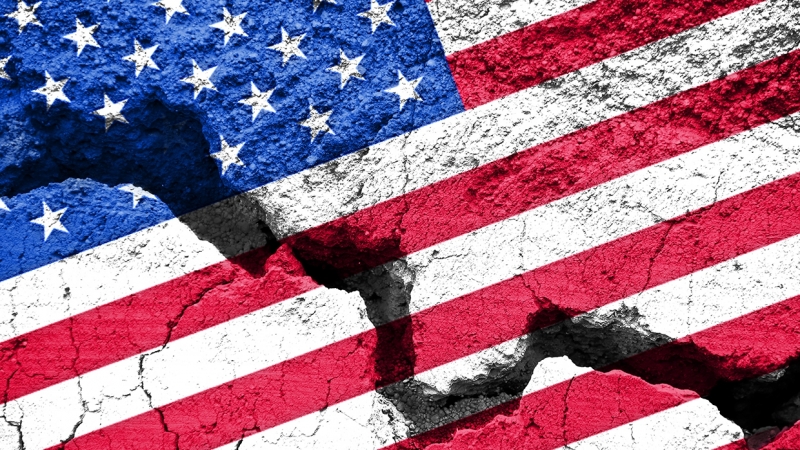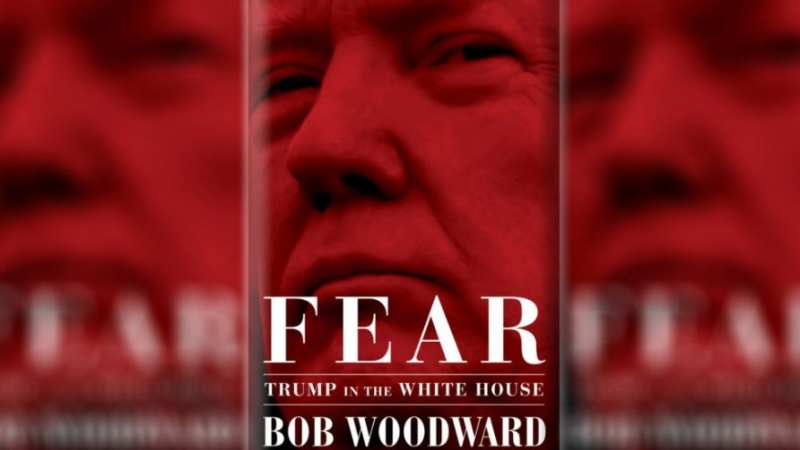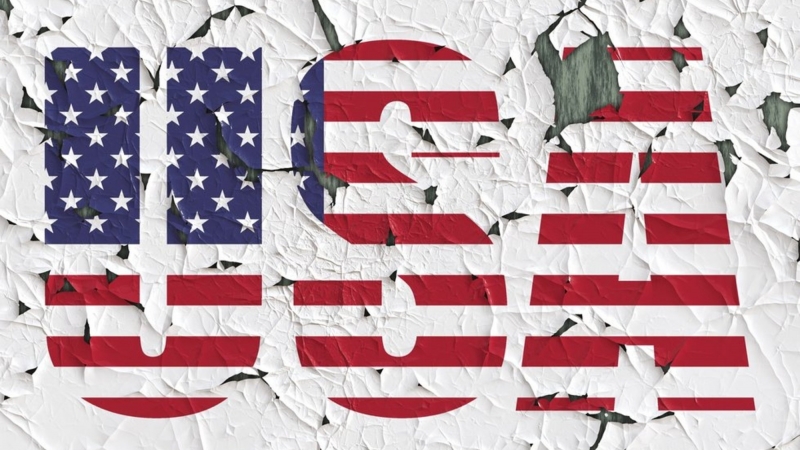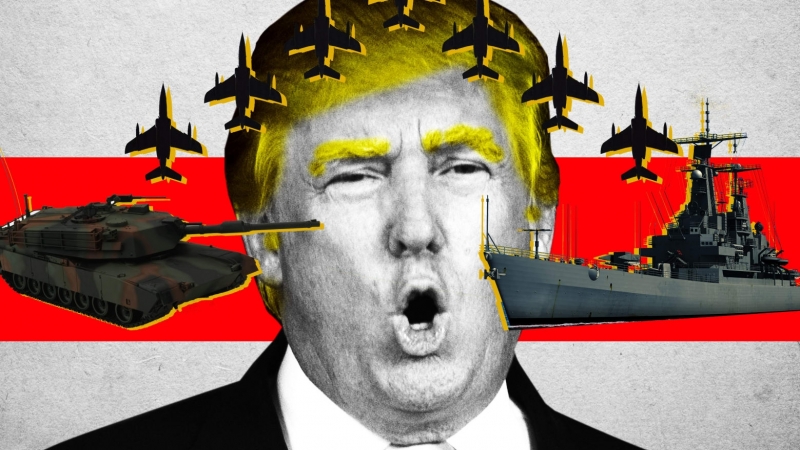Can US Political Divide be Bridged? The Short Answer is No
Empowering Weak & OppressedKevin Barrett
Rajab 17, 1442 2021-03-01
Main Stories
by Kevin Barrett (Main Stories, Crescent International Vol. 50, No. 1, Rajab, 1442)

The 2020 US presidential elections have been compared to those of 1860. In both cases, the results exposed a stark political, ideological, and cultural divide, as southern and rural “reds” faced off against northern and urban “blues.”
Observers in both cases forecast possible civil war. And indeed, on April 12, 1861, an actual shooting war broke out as the South Carolina Militia battled the US Army at Ft. Sumpter. Before it was over, 620,000 Americans were dead—almost half of the total number of Americans killed in all US wars. Today, if a similar proportion of the US population were killed, the total number of dead would exceed six million.
Will history repeat itself? Some might say it already has: Ft. Sumpter was the tragedy, while the January 6 Capitol “insurrection” was the farce. In 1861 the rebels had General Robert E. Lee, a towering figure. Today, Lee’s statues are being toppled, while the rebels are represented by the likes of Jake Angeli, better known as Q Shaman, iconic for his horned fur headdress, red white and blue war paint, and six-foot flagpole spear.
On January 6, 2021, the blues quickly recaptured the Capitol and declared victory. With President Joe Biden presiding over a Democratic Congress, and most of the media on their side, the blues certainly have the upper hand. But will they go too far? That is what Alan Sabrosky, former Director of Strategic Studies at the US Army War College, expects: “...the viciousness and utter vindictiveness of the Democrats exceed by far my own dismal expectations. It is, of course, true to form – Marxist form, that is – and shows signs of being patterned on what the victorious ‘Reds’ (read ‘blues’ here) meted out to the defeated ‘Whites’ after Russia’s Civil War.”
In his recent interview on my radio show, Sabrosky said he hopes the Democrats’ hubris and excess will provoke a backlash. The best-case scenario, in his view, would be a new secessionist movement. Texas, which prides itself on its history as an independent country that only reluctantly and partially granted the US federal government sovereignty over its territory and people, would be a natural leader. A “Texit” movement could spread to other states, sparking either a new civil war or a peaceful breakup of the USA into smaller and more cohesive and manageable entities.
What’s it about?
What is America’s red-vs-blue conflict really about? In some ways, the current stand-off resembles that of 1860. The issue then was: Should African-American slavery be extended into new states? Today, descendants of slaves are still demanding equality and dignity. Many Americans sympathize with their plight. Others—including a majority of reds—believe that full equality of opportunity has already been achieved, and that white people are at least as discriminated-against as any minority group.
And they expect worse “anti-white discrimination” in the future. The reds, most of them white, are unhappy that demographic change driven by open immigration policies will reduce white Americans to minority status by 2050. Since America was 90% white in 1950, and 88% white in 1980, the impending collapse of vast-majority-white America in just half a century terrifies and angers those who are emotionally attached to their ethnic majority status.
And then there are the culture wars. The reds, by and large, support traditional religion and family values. The blues, for their part, are waging a bizarre crusade against those values. They are pushing normalization of sexual deviance, insisting that people come in any number of genders, rather than the traditional two, and that those who disagree, including all conventionally religious people, must be deplorable “homophobes” or “transphobes.”
The reds and blues have radically different core narratives. The reds favor heroic myths that lionize their ancestors and traditions, while the blues have forged a counter-myth that turns the reds’ heroes into arch-villains, and their traditional culture into something despicable. The blues have been on an iconoclastic rampage for the past several years, toppling statues and vandalizing and destroying monuments. The reds, watching the rampage, have been accumulating pent-up anger—which flared up briefly at Charlottesville in August 2017, and is likely to flare up again.
The reds and blues have their own gangs of street fighters. Red hooligan groups include the Proud Boys, while the blues have Antifa. Interestingly, the reds, who strongly support Second Amendment gun rights, have many armed and at least somewhat organized militias, while the mostly-unarmed blues only have a small recent armed start-up, Redneck Revolt.
Deeper factors
Hidden beneath all this surface-level sound and fury are deeper factors driving the conflict. Economic inequality in the US has skyrocketed over the past half-century, and is growing at an ever-accelerating pace. Young people deprived of opportunities often turn to gang violence. Both the red and blue hues of extremism, especially the street-fighting elements, are saturated with testosterone crazed, deeply frustrated young males.
Would it be cynical if not downright paranoid to wonder whether the beneficiaries of inequality—the billionaire oligarchs who own the media and almost everything else in America—might not be stoking the fires of division in order to distract us from their ongoing acts of grand larceny? If so, count me a paranoid cynic.
So where will it end? It is hard to imagine a viable red-blue synthesis—the peaceful “purple” dispensation symbolized by the near-universal sartorial purple sported by key figures at the Biden inauguration. There are too many stark ideological and cultural incompatibilities between the red project of “making America great again” by returning to a mythically glorified past, and the blue vision of tearing down that past to make way for a nebulously utopian future.
Might America’s rulers try to unite their divided nation by declaring war on a scapegoated and demonized foreign enemy? Perhaps. They, and others, have done it before. But this time around, as US global power has all but disappeared, it is far from clear than any conceivable foreign war could succeed in making Americans forget their domestic troubles. A small undertaking—such as a Biden re-invasion of Grenada—would be risible. A large one—such as war on Russia, China, or Iran—would be disastrous.
An ominous portent
Some who expect the worst, including Trump’s sometime advisor Steve Bannon, cite the Fourth Turning theory of sociologists William Strauss and Neil Howe. According to that theory, cyclical generational changes driven by child-rearing patterns have created an 80-year cycle in American history. At the end of each 80-year cycle, a cataclysmic bloodbath occurs, destroying the previous dispensation and opening the way for a new one.
If Strauss and Howe are right, we are right on schedule for a bloodbath. Around each of the years 1780, 1860, and 1940, oceans of blood were shed, generating new American myths that drove new political dispensations. 1780 marked the first American civil war, a bloody series of fratricidal atrocities mythically remembered as “the American Revolution.” 1860 brought the Civil War. 1940 brought World War II and its many holocausts, including those of Dresden, Hamburg, Hiroshima, and Nagasaki (and the sacrifice of over 300,000 American lives, a small portion of the global tally of 75 million). How much bloodshed will emerge out of the yawning chasm opened by America’s internecine conflicts of 2020?
All three of America’s previous bloodbaths were won by equivalents of the blues—the people who wanted to tear down the old order. The Revolutionists of 1780 demolished the British colonial order and built a union of largely independent states. The Yankees of 1860 annihilated that loose union of sovereign states and replaced it with federal tyranny. And the pro-war party of 1940—a minuscule portion of the electorate, which overwhelmingly opposed US entry into World War II—put federal tyranny on steroids by turning power over to an unelected military-industrial-banking complex and its permanent Deep State.
Based on historical precedent, we might expect the red-vs-blue war of the 2020s to end in yet another decisive blue victory, erasing all vestiges of tradition and enshrining an even more extreme form of tyranny (if such a thing is possible). But as an Arabic proverb says, “a thing that exceeds its limit turns into its opposite.” If what Alan Sabrosky calls “the Blue Terror” goes too far, stampeding over its opponents and censoring and silencing dissent with excessive hubris, a red reaction might be spurred to some sort of victory, however pyrrhic—whether by establishing its own tyranny of terror, or by breaking the nation into pieces.




